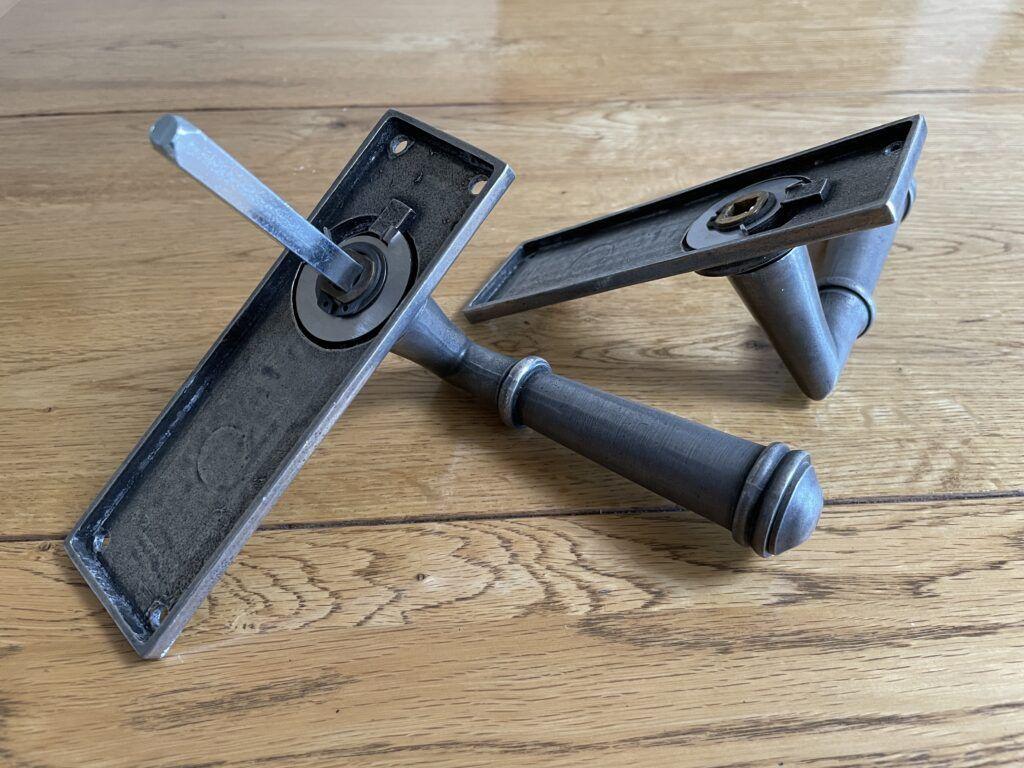What is a Spindle and what kind do I need?
25 November 2020 :: How To Guides
What is a Spindle and what kind do I need?
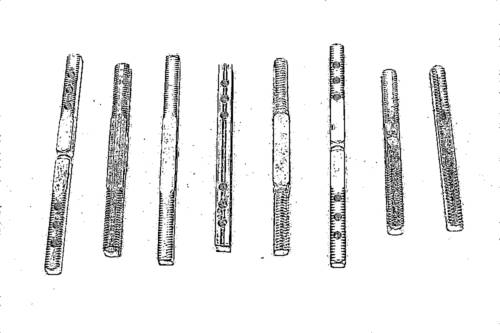
Door Handle Spindles
Architectural Ironmongery can be a confusing place - filled with different terminology and jargon that can quickly become confusing. The More Handles Technical guides series of articles aims to break down confusing industry jargon, and help explain the differences between similar items where confusion can easily occur. The Spindle is an integral, if often overlooked, item in architectural ironmongery.
What is a spindle?
A spindle is a length of square rod or bar, made from metal, usually steel, which connects two Door Handles or Door Knobs together on either side of a door.
The spindle locates into the square holes found at the back of a set of door handles or door knobs. It passes through the follower* (spindle hole) on a tubular latch or mortice lock. When the levers on a set of door handles set are depressed by hand, or the door knob is turned, the spindle rotates and operates the latch inside the door. This retracts the latchbolt (also known as latch tongue), which allows the door to open.
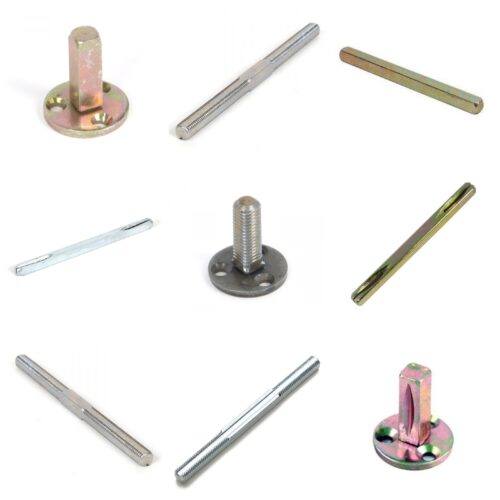
Door Handle Spindle Sizes
The modern industry standard cross-section thickness size of a door handle spindle is 8mm (5/16") square. This size has become the standard size for modern spindles. It should be noted however; spindles and followers were not always standardized to 8mm. Before introduction of the metric system, they tended to be manufactured in imperial measure at 19/64", which translates to 7.6mm. Some pre-20th century locks were even produced with other varying spindle sizes including 7mm, and occasionally they may be found in even smaller sizes. This can make for some difficulty when trying to replace a spindle, or replace the Door Handles or Door Knobs on an old latch or lock, as a modern 8mm spindle will not pass through a smaller-sized follower. To save some frustration when replacing old door handles, it is always best practice to measure the follower or spindle on your existing latches, locks and handles.
In addition to the thickness of a door handle spindle, the length of spindles can also vary. The most common length of spindle supplied with door handles and door knobs is 100mm (4”) which is sufficiently long enough to pass through all standard-thickness doors, including fire doors, and still have enough length on either side to locate into the back of the door handles or knobs. Occasionally, an exceptionally thick door will necessitate a longer spindle than the standard 100mm one. For this reason, we recommend that door thickness should always be checked when replacing door furniture. Doors which are thicker than 45mm may need a longer one. In this instance, it is possible to buy longer spindles, and cut them down with a hacksaw to the correct size to suit your purposes. We can supply extra long spindles in several different sizes and styles.
On occasion, new spindles supplied with door furniture may be initially too long, such as when used on very thin interior doors. In this instance, it is simply necessary to place the spindle in a vice, and cut it down with a hacksaw. If undertaking this, measure it carefully, including the length needed to locate into the rear of the two door handles. Measuring this correctly will prevent the it from being cut too short.
So, does one style of spindle fit all door handles and door knobs? The answer is, unfortunately not. Whilst the modern industry standard for spindles is 8mm square as discussed, there is a wide range of types of spindle to suit different door furniture applications.
Let’s take a look at some of the most commonly encountered types of spindle.

1) Plain Square Spindle
The Plain Square Spindle is used in situations where the item of door furniture is face-fixed* onto the door. Face-fixing a door handle or door knob to a door transmits the pulling pressure to the backplate or rose on the door furniture rather than to the spindle, meaning that no other gripping to itself is required.
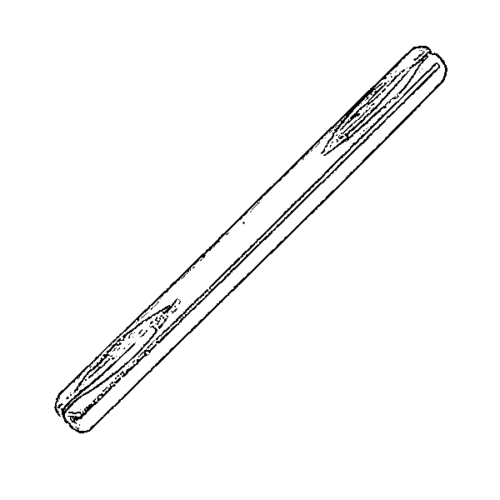
2) Grooved (Slotted) Square Spindle
The Grooved spindle is cut right through at either end, and has a grooved out ‘trough’ surrounding the groove. The purpose of the groove is to accept a grub screw**, which fits through a threaded hole in the shaft of the door handle or door knob, and locates into the groove. The grub screw then wedges into the groove and opens up the spindle, creating a very secure fixing on handles which utilize bolt-through fixings† rather than face-fixings.

3) Threaded Spindle
The threaded spindle is primarily used on door knobs, especially on rim knob furniture. The threaded spindle is sometimes threaded at one end with a door knob fixed permanently to the other end, or more commonly, threaded at both ends, to allow for maximum adjustment. The threaded spindle provides a very secure fixing for door knobs, as the knob must be threaded up the spindle for several turns. It also provides a very adjustable fixing, as it is possible to thread the door knob just far enough up the spindle on either side. We can supply threaded spindles, however they are available in a large range of imperial and metric, coarse and fine threads. For this reason, if you need a threaded spindle, we advise you to contact our experts to discuss your requirements.
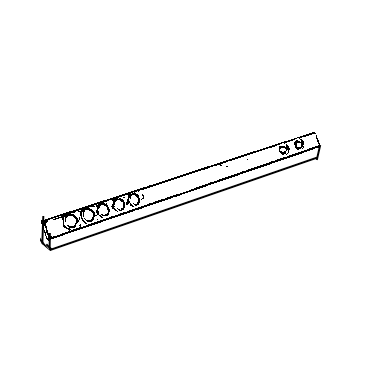
4) Drilled (Tapped) Square Spindle
The Drilled spindle features drilled and threaded holes placed at intervals along the length of its shaft. The drilled spindle is meant for use with a long grub screw, which locates into the threaded holes. Whilst providing a very secure fixing right through the spindle, the spindles’ pre-set drilled intervals makes for pre-set junctures at which the door handle or knob can be secured, so can make for a slightly less precise fitting against the door. For this reason, the drilled spindle has been largely forgone in recent years in favour of the Grooved spindle.
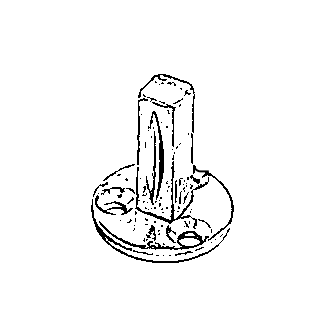
5) Taylor (Dummy) Spindle
The Taylor spindle is used in situation where a ‘Dummy’ handle is required, usually for pushing/pulling large wardrobe doors with a full size door handle or door knob, or commonly on a double door set, on the slave door (§). The Taylor Spindle is unique in that it is the only type of spindle that does not pass through the door. Instead, the spindle shaft is mounted upon a small circular plate, which is face-fixed onto the door. The shaft then locates into the back of a door handle or door knob. This fixes the item in place, stops it from turning, and provides a sturdy push/pull dummy handle. If used as an independent wardrobe door, either a Magnetic Catch or a Roller Bolt (Ball Catch) is used, instead of a Tubular Latch.
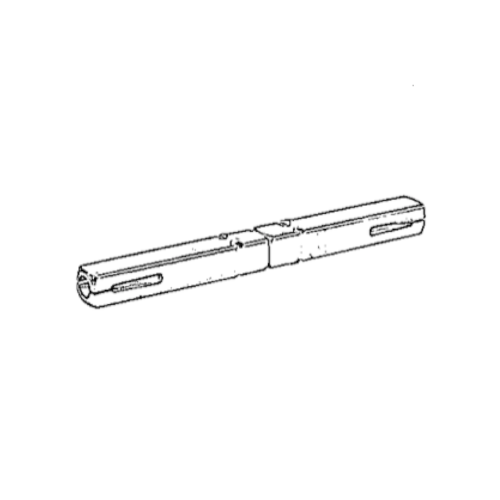
6) Split Spindle
The Split Spindle is a two-part spindle, joined in the middle, so that the two sides can rotate independently of one another. Most commonly used with a Night Latch, this type of spindle creates a system in which the internal handle can be operated as normal, but the external handle does not operate the latch. This means that only known key-holders can enter, as the key actually operates the latch from the outside, rather than the door handles.
Having looked at the above range of spindles available, you may be asking ''How do I know what type of spindle I need?'' The good news is, all of our door furniture is supplied with the relevant spindle required, and we can supply locks and latches to suit all of the spindles we supply, should you need them.
As we discussed above, it is always best practice to measure the follower or spindle on your existing handles, to save yourself any frustration when replacing old handles. If you do find the spindle to be smaller than the modern standard of 8mm, you will most likely need to either replace your latch or lock for a new product, or find a lever handle or door knob that has a spindle which is smaller than 8mm. At More Handles, we carry the most comprehensive range of locks and latches on the web, and you are very likely be able to find a replacement for your door lock or latch by browsing our range of locks right here.In addition, we carry several lines of door handles and door knobs in particular, that are made specifically for older locks and latches, and so come with a smaller spindle which will fit through old style smaller followers. We carry a range of period style door knobs which you can view here that all come with a 7mm spindle to fit old imperial locks, and many items in the From the Anvil range of products come with a 7.6mm spindle. We also have a very nice collection of wooden door knobs which you can see here, all with a 7.6mm spindle.
If you have an issue with spindle sizing, or have oddly sized lock followers or spindles, then please don’t hesitate to contact our experts. We regularly help customers in both residential and commercial settings with specifying the correct door handles, spindles and locks or latches to suit their needs, even if that be for very old homes or buildings with imperial or odd-sized locks. Our latch and lock experts will be happy to discuss your requirements and talk through this topic with you further.
Call us on 01228 516 516 or email at sales@morehandles.co.uk
WEB - morehandles.co.uk
Annotations:
*Face-fixing: Ordinarily meaning an item which is fixed with wood screws through its backplate or rose into the face of a door, cupboard, or drawer. The opposite to Rear-fixing, in which bolts or screws are used to locate through the door into the rear of the product.
**Grub Screw: A very small threaded screw, usually with a blunt or spiked end, used primarily within ironmongery on the shaft of a door handle or door knob, to fix the item to the spindle.
† Bolt Through Fixings: A Male/Female bolt and cap assembly, which typically allows through-door fixing for extra strength and sturdy fixing. Commonly used on Lever-on-Rose handles and some door knobs.
§ Slave Door: Part of a set of double doors, the Slave Door is the door that remains primarily bolted closed and either has no door handle at all, or just a dummy handle. The term Slave Door is the opposite the Master Door, which is the most used door in the double door set, and usually features the working door handle or door knob.

